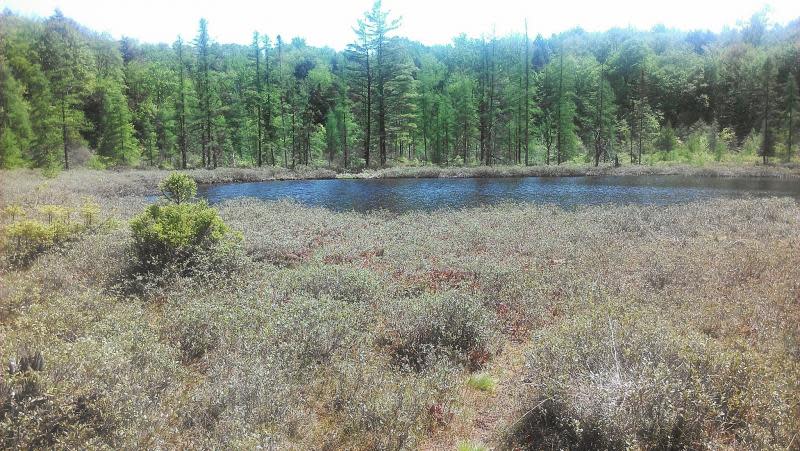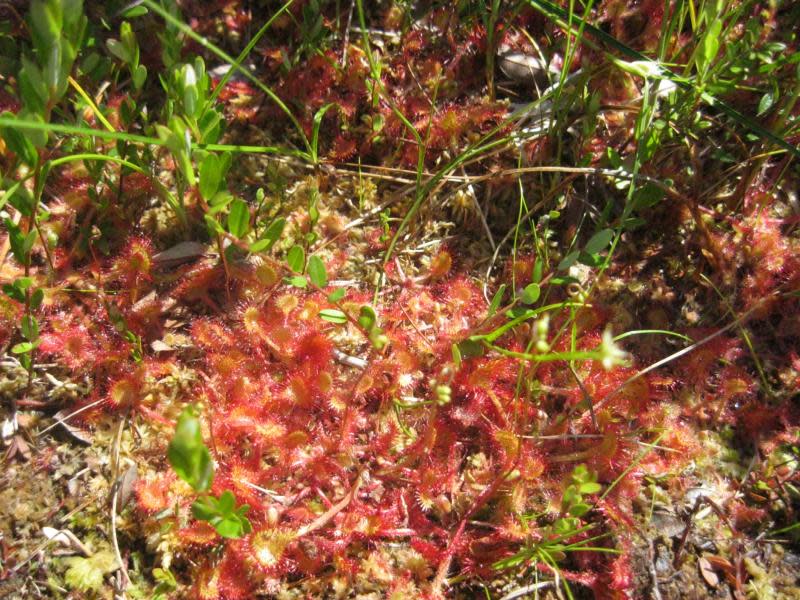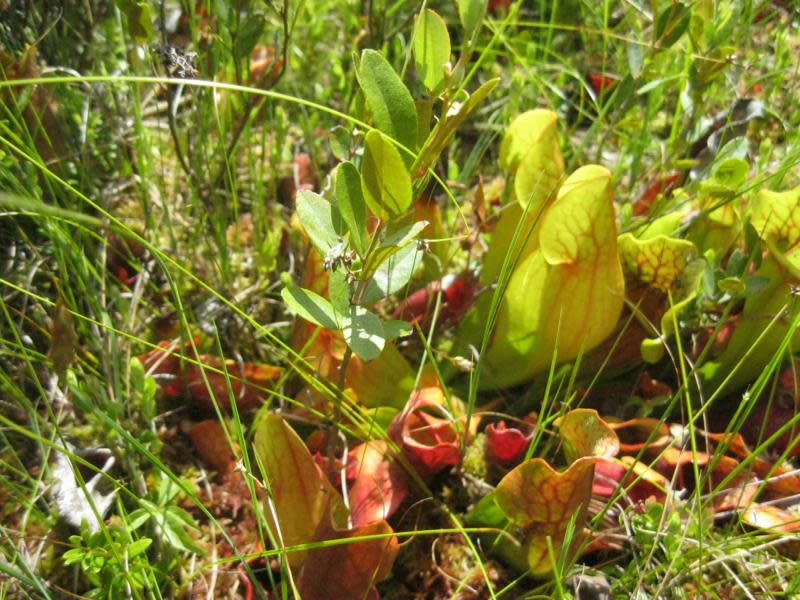
Allenberg Bog
Categories
Mid-Atlantic (DE, DC, MD, NJ, NY, PA)
About
- Listed on more than one “valuable wetland” list by natural resource agencies or nongovernment organizations.
- Protects biological diverse wetland flora, fauna and/or their habitat
- Rare or unique wetland type within its own biogeographical region. (Meeting this criteria would include, but is not limited to, wetlands with unique hydrology or chemistry that make it rare within its own region)
A regionally unique example of a high elevation floating Bog and kettle pond wetland complex formed on a glacially derived lake in Western New York. Bog and ponds were purchased and protected by the Buffalo Audobon Society since 1957 and are essentially undisturbed. It's geographic position has resulted in an unusual diversity of plant species of western, northern, coastal plain, and Appalachian distribution. Its elevation, at 1720 feet ASL, is higher than most other glacial lakes with bogs in the WNY region and the consequent coolness of the habitat has allowed many plants to thrive that are more typical of the arctic tundra. Allenberg Bog contains rare wild orchids, 28 species of liverworts, 58 species of mosses (10 in the genus Sphagnum), over 300 species of vascular plants including 19 fern species and 38 species of Carex. The site also contains an alkaline meadow and several acres of Rhododendron, many of which exceed 20ft.
- Maintains ecological connectivity/cohesion
- Recreation (birdwatching, ecotourism)
- Carbon storage
- Education
The Allenberg Bog is part of the Buffalo Audobon Preserve. Western New York Land Conservancy has purchased a 10 acre property which includes wetlands at the eastern outlet of Allenberg Bog in order to help protect the unique bog system.
Adjacent land use includes forested and scrub shrub wetlands immeadilately adjacent to the bog, in combination with upland forest and agricultural land as one moves further from the wetland complex.
Allenberg Bog is open to the public, but the bog areas do not have boardwalks which means you'll get wet, at least to the knees,depending on the time of year and where you step. The bog habitat is very sensitive, and foot traffic should be kept to a minimum and/or include a guide familiar with the bog.
This is a regionally unique bog that is essentially undisturbed for the last 50 years since Audobon purchased it. No other examples of high altitude, glacially derived, bog systems of this large a size that are still relatively undisturbed, exist in this part of western New York. Access and movement through the bog is difficult. Please do not jeopardize the ecological integrity of this bog since it is without boardwalks or paths.
- Lake
- Pond
- Stream
Peat deposits underlain by unconsolidated glacial till and kame deposits. Three surficial geologic units are mapped either in or adjacent to Allenberg Bog by the USGS/New York State Museum:
1) Swamp deposits - that include peat-muck, organic silt, and sand in poorly drained areas. the material is unoxidized,
commonly overlies marl and lake silt, has potential land instability, and varies in thickness between 2-20 meters.
2) Till deposits - that include variable textures (boulders to silt), is usually poorly sorted sand-rich diamict material that was deposited beneath glacier ice and whose permeability varies with compaction. Till deposits vary in thickness between 1-50 meters.
3) Kame deposits - that includes coarse to fine gravel and/or sand associated with kames, eskers, kame terraces, kame deltas, ice contact, or ice cored deposition. the kame deposits exhibit lateral variability in sorting, texture and permeability and may be firmly cemented with calcareous cement. Kame deposit thicknesses vary between 10-30 meters.
The three primary mapped soil types for Allenberg Bog in the Catteraguas County Soil Survey are:
1) Carlisle muck, 2) Palms muck 0-2% slopes, and 3) Alden mucky silt loam
Images


